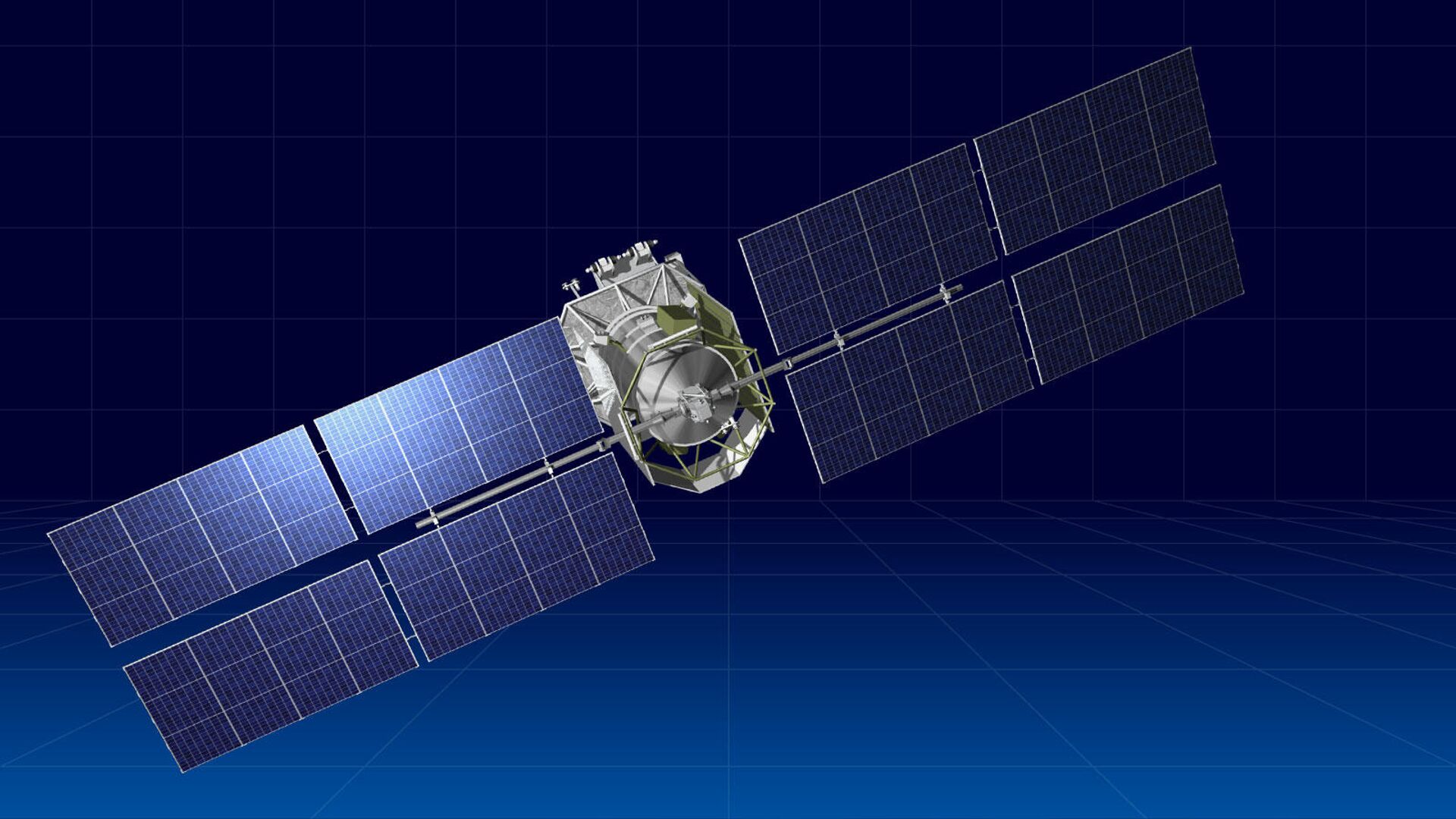https://sputnikglobe.com/20220322/russian-military-takes-command-of-meridian-m-comms-satellite-after-successful-launch-into-orbit-1094095642.html
Russian Military Takes Command of Meridian-M Comms Satellite After Successful Launch Into Orbit
Russian Military Takes Command of Meridian-M Comms Satellite After Successful Launch Into Orbit
Sputnik International
The Meridian series of dual-use civilian/military communications satellites began to sent to space in the mid-2000s. In 2019, the first upgraded Meridian-M... 22.03.2022, Sputnik International
2022-03-22T18:46+0000
2022-03-22T18:46+0000
2022-03-22T18:46+0000
meridian communications satellite
satellite
russian military
https://cdn1.img.sputnikglobe.com/img/07e6/03/16/1094095617_0:0:1600:900_1920x0_80_0_0_50253e2efb89e81827a3d65503423b6b.jpg
The Russian military has taken control over the Meridian-M communications satellite after its launch from the Plesetsk Cosmodrome aboard a Soyuz rocket on Tuesday, the Ministry of Defence has announced.The ministry indicated that a stable telemetry connection has been established with the spacecraft, and that onboard systems are functioning normally.Meridian-M satellites were developed to replace Molniya-3 and Parus – tried and tested but aging military communications and navigation satellites whose designs go back to Soviet days. In civilian mode, Meridians are used to provide for communications between vessels and ice reconnaissance aircraft in the area of the Northern Sea Route with coastal and ground stations. In addition, the satellites expand the capabilities of Russian satellite communication stations in Siberia and the Russian Far East.Meridian series satellites operate in highly elliptical orbit, designed to improve the operational, technical and economic characteristics of existing communications equipment by expanding frequency ranges, increasing lifespan and providing higher reliability than their predecessors.Development of Meridian series goes back to the mid-1980s, with the programme revived in the 2000s after lying dormant for over a decade due to the collapse of the USSR. A total of seven Meridians and three Meridian-Ms have been launched to date, with three lost between 2006 and 2011. The satellites share some equipment – such as onboard computer, motion control and attitude control systems, with the Glonass-M series of navigation/global positioning satellites.
Sputnik International
feedback@sputniknews.com
+74956456601
MIA „Rossiya Segodnya“
2022
News
en_EN
Sputnik International
feedback@sputniknews.com
+74956456601
MIA „Rossiya Segodnya“
Sputnik International
feedback@sputniknews.com
+74956456601
MIA „Rossiya Segodnya“
meridian communications satellite, satellite, russian military
meridian communications satellite, satellite, russian military
Russian Military Takes Command of Meridian-M Comms Satellite After Successful Launch Into Orbit
The Meridian series of dual-use civilian/military communications satellites began to sent to space in the mid-2000s. In 2019, the first upgraded Meridian-M satellite was deployed.
The Russian military has taken control over the Meridian-M communications satellite after its launch from the Plesetsk Cosmodrome aboard a Soyuz rocket on Tuesday, the Ministry of Defence has announced.
“The Meridian-M spacecraft has been delivered into its target orbit and accepted by the ground forces of the Titov Main Test and Space Systems Control Center, which will control it during its orbital flight,” the MoD told reporters in a statement Tuesday.
The ministry indicated that a stable telemetry connection has been established with the spacecraft, and that onboard systems are functioning normally.
Meridian-M satellites were developed to replace Molniya-3 and Parus – tried and tested but aging military communications and navigation satellites whose designs go back to Soviet days. In civilian mode, Meridians are used to provide for communications between vessels and ice reconnaissance aircraft in the area of the Northern Sea Route with coastal and ground stations. In addition, the satellites expand the capabilities of Russian satellite communication stations in Siberia and the Russian Far East.
Meridian series satellites operate in highly elliptical orbit, designed to improve the operational, technical and economic characteristics of existing communications equipment by expanding frequency ranges, increasing lifespan and providing higher reliability than their predecessors.
The Meridian satellite constellation is also intended to work as part of the Integrated Satellite Communication System (ISCS). The ISCS is a digital communication standard used by the Russian military and envisioned as a global, multiband standard using packet data transfer methods, and whose spacecraft have an active service life of up to 15 years.
Development of Meridian series goes back to the mid-1980s, with the programme revived in the 2000s after lying dormant for over a decade due to the collapse of the USSR. A total of seven Meridians and three Meridian-Ms have been launched to date, with three lost between 2006 and 2011. The satellites share some equipment – such as onboard computer, motion control and attitude control systems, with the Glonass-M series of navigation/global positioning satellites.

